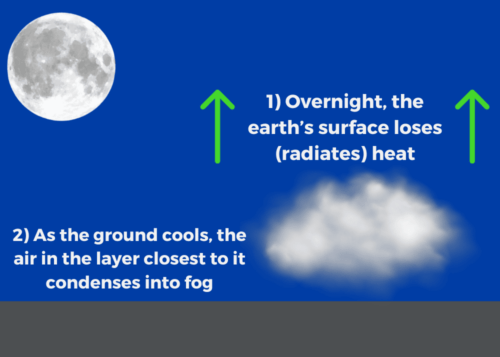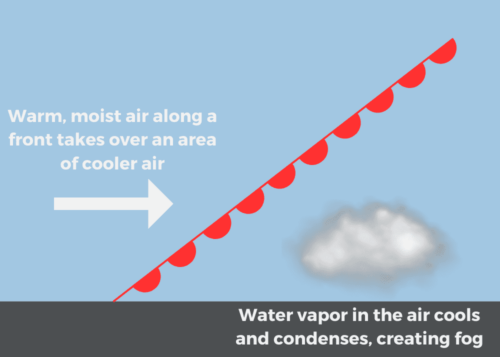5 Types of Fog and How They Form
Fog, with its ethereal beauty and enigmatic allure, has captured human fascination for centuries. From ancient myths to modern poetry, it has often been used as a metaphor for uncertainty and mystery. However, for industries and businesses, fog is more than just a poetic metaphor; it can be a tangible challenge that affects operations and safety. In this blog post, we will delve into the world of fog, exploring what it is, what causes it, where it is most likely to occur, and how it disrupts various business sectors.
What Is Fog?
Fog is a meteorological phenomenon characterized by a dense collection of tiny water droplets or ice crystals suspended in the air near the Earth’s surface. These suspended particles scatter and attenuate light, reducing visibility. While fog can create stunning landscapes and mystical atmospheres, its impact on transportation, safety, and various industries cannot be underestimated.
Causes of Fog
Understanding the causes of fog is essential to predict its occurrence and mitigate its impact. There are several mechanisms that lead to the formation of fog, each associated with specific atmospheric conditions:
Radiation Fog
This type of fog occurs on calm, clear nights when the ground loses heat rapidly as the temperature drops, and the air near the surface cools, causing moisture in the air to condense into tiny water droplets. Radiation fog is commonly observed in valleys and low-lying areas and is most common during the fall and winter. This type of fog will gradually lift with sunlight the following morning.

Advection Fog
Advection fog forms when warm, moist air moves over a cooler surface. As the warm air cools, moisture within it condenses into fog. Coastal areas are particularly susceptible to advection fog, where warm, moist air from the ocean encounters cooler land surfaces.

Steam Fog
Steam fog, also known as sea smoke or evaporation fog, occurs when cold air moves over warmer water bodies, such as lakes or rivers. The relatively warm water causes the air above it to saturate quickly, forming fog. This type of fog is most common during the transition from late autumn to early winter and is commonly found in polar regions.

Upslope Fog
Upslope fog develops when moist air is forced to rise over elevated terrain, such as hills or mountains. As the air ascends, it cools and condenses into fog. This phenomenon is prevalent in regions with significant topographic variations.

Frontal Fog
Frontal fog results from the lifting of warm, moist air over a cold front. The cooling of the air leads to condensation and fog formation. This type of fog often occurs with the passage of weather fronts and can extend over large areas.

Where Is Fog Most Likely to Occur?
Fog is a global phenomenon that can occur in various regions under specific conditions. Some areas are more prone to fog due to their geographic features or prevailing weather patterns. Here are a few regions where fog is particularly common:
Coastal Areas
Coastal regions are often shrouded in fog, especially during the summer months when warm ocean currents meet cooler coastal landmasses. Cities like San Francisco and London are known for their frequent coastal fog.
Valleys and Low-Lying Areas
Valleys and low-lying regions are susceptible to radiation fog, which forms during clear, calm nights. Famous examples include California’s Central Valley and the Great Smoky Mountains.
Mountainous Regions
Mountainous areas often experience upslope fog when moist air is lifted over elevated terrain. Locations like the Himalayas and the Andes are prone to this type of fog.
Northern Latitudes
Northern regions with cold temperatures are susceptible to ice fog, a type of fog composed of ice crystals. This occurs in places like Alaska during extremely cold winter conditions.
Fog’s Impact on Different Industries
Fog, while captivating in its natural beauty, can wreak havoc on various industries, disrupting operations and causing economic losses. Here are some industries that are particularly affected by fog:
Transportation
Fog poses significant challenges for aviation, road, and maritime transportation. Reduced visibility can lead to flight cancellations and delays, road accidents, and navigation difficulties for ships. Airports often invest in advanced fog detection and navigation systems to minimize disruptions.
Agriculture
Fog can have both positive and negative effects on agriculture. While it can provide moisture to crops during dry periods, prolonged fog can also lead to mold and fungal diseases, damaging crops and affecting yields.
Energy
Power generation facilities, such as nuclear power plants and solar farms, rely on clear skies for optimal operation. Fog can reduce solar panel efficiency and impact the cooling systems of power plants, potentially causing outages.
Aerospace and Defense
Military operations and air defense systems can be severely impacted by fog. Reduced visibility hinders surveillance, reconnaissance, and combat capabilities, making it necessary for defense forces to develop strategies for foggy conditions.
How Businesses Can Mitigate Fog Risks
Businesses can integrate weather data into their operations and decision-making processes. Advanced analytics can help them assess the potential impact of fog on their activities and develop contingency plans to minimize disruptions.
Advanced Forecast Models
Weather technology now employs highly sophisticated computer models that simulate atmospheric conditions. These models take into account various factors, such as temperature, humidity, wind patterns, and pressure systems, to predict when and where fog is likely to form. Businesses can access these forecasts to plan their operations accordingly.
Remote and Ground Based Observation
Weather satellites equipped with advanced sensors can monitor moisture levels and temperature variations in the atmosphere. These observations are crucial for identifying conditions conducive to fog formation. Additionally, ground-based observation tools, like weather radars, provide real-time data on cloud cover and fog thickness.
Transportation and Navigation Tools
The transportation industry benefits greatly from weather technology that provides real-time updates on fog conditions. Aviation, in particular, relies on advanced weather radar and forecasting tools to ensure safe takeoffs, landings, and flight paths during foggy conditions.
Mitigate Disruptive Weather Events like Fog
Fog is a powerful force that can disrupt various industries and daily life. Understanding its causes and effects is crucial for businesses and communities to prepare for its impact. Better weather technology offers businesses valuable tools for predicting and monitoring fog. These tools help businesses make informed decisions, minimize disruptions, and enhance safety during foggy conditions. While we can appreciate the beauty of fog, for several industries, it remains a formidable challenge that requires careful planning, advanced technology, and adaptability to mitigate its disruptions. If you’d like to learn how Climavision’s customizable precision forecast products can help your organization mitigate the risks associated with fog and other disruptive weather events, contact us.




